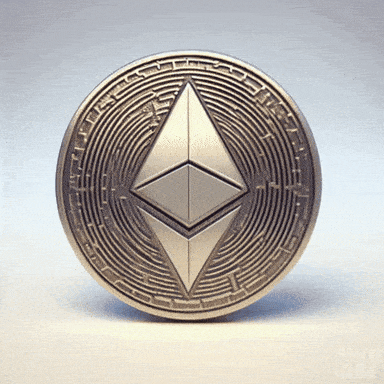The crypto markets thrive on rivalries, and since Solana came onto the scene, they unwittingly started one of the biggest crypto rivalries in recent years, with Ethereum. This isn't just a technical comparison between blockchain architectures, it's about philosophies, use cases, and investor expectations. Arthur Hayes, co-founder of BitMEX, recently threw some very flammable liquids on these flames when he boldly predicted that Ethereum will significantly outpace Solana during this bull cycle. His analysis cut through the superficial market chatter and revealed why (he thinks) Ethereum's current unpopularity might actually be its secret weapon for the coming rally.

Arthur Hayes, co-founder of BitMEX
Hayes’ argument boils down to an observation he made during a Fortune interview:
"Ethereum has a better performance outlook, mostly because it's very hated."
This weirdly counterintuitive stance reveals a deep understanding of market cycles. When an asset becomes the subject of universal criticism, as Ethereum has been for its notorious gas fees and scalability woes, it often plants the seeds for dramatic upside when sentiment inevitably pivots. The market's current disdain for Ethereum creates precisely the conditions where savvy investors can capitalize before the crowd catches on.

Gif by jorgemariozuleta on Giphy
To understand why Hayes might be right, we need to look beyond surface-level price movements. While it's true that Ethereum's performance since 2020 has paled next to Solana's eye-catching rallies, the fundamental picture tells a different story. Ethereum continues to dominate where it matters most, maintaining the largest total value locked across all blockchain platforms, a testament to its entrenched position as the backbone of decentralized finance. Its developer community remains the most active and robust in crypto, with thousands of builders consistently working to improve the ecosystem. Perhaps most importantly, Ethereum stands as the undisputed gold standard for secure proof-of-stake blockchain technology, having successfully executed its monumental Merge transition while maintaining network integrity.
Recent price action reveals an intriguing dynamic that supports Hayes' thesis. Over the past six weeks, while Solana posted an impressive 80% gain from $100 to $180 before pulling back, Ethereum quietly staged an even stronger rally, nearly doubling from $1,400 to approach $2,700. This outperformance becomes particularly interesting when you consider the context. Solana's surge came during its meme coin frenzy earlier this year, when the network became the playground for speculative trading. Now that this bubble has deflated, Solana's network activity and revenue have declined significantly, while Ethereum continues to power critical infrastructure across multiple sectors.

The developer landscape offers perhaps the most compelling evidence for Ethereum's enduring advantage. According to comprehensive industry reports, Ethereum boasts over 4,000 monthly active developers, four times Solana's count, with a remarkable retention rate exceeding 70%. This concentration of talent creates a powerful network effect that becomes increasingly difficult to disrupt. More developers build better applications, which attract more users, which in turn draws more developers, a virtuous cycle that compounds over time. While Solana has made impressive strides in attracting developers, it still lacks the depth and breadth of Ethereum's ecosystem.
Several upcoming developments could further widen Ethereum's lead. The implementation of EIP-4844, known as Proto-Danksharding, promises to reduce Layer 2 transaction costs by an order of magnitude, directly addressing one of Ethereum's most persistent criticisms. Verkle Trees, another major upgrade on the horizon, will enable stateless clients and push scalability even further. Account abstraction improvements stand to dramatically enhance user experience, making Ethereum more accessible to mainstream audiences. These aren't speculative promises but concrete upgrades with testnets already demonstrating their potential.
Solana, for all its technical merits, faces challenges that could limit its upside in this cycle. The network's reliance on a relatively small number of validators raises persistent centralization concerns that contrast sharply with Ethereum's more distributed validator set. High-profile network outages in recent years have dented confidence in Solana's reliability as enterprise-grade infrastructure. Most importantly, Solana's ecosystem remains heavily concentrated in speculative trading activity, lacking the diversified application landscape that gives Ethereum its resilience.
Hayes' perspective becomes particularly interesting when considering his broader market outlook. The BitMEX co-founder maintains a 20% gold allocation in his personal portfolio while remaining bullish on crypto's flagship assets. His Bitcoin predictions are characteristically bold, a near-term target of $200-$250,000 by year-end, and a staggering $1 million by 2028. This macroeconomic backdrop matters because it suggests we're entering a phase where institutional capital will increasingly drive market movements rather than retail speculation.

Gif by adultswim on Giphy
The current market structure mirrors previous cycles in important ways. Typically, Bitcoin leads the initial bull run as the safest crypto exposure, followed by money rotating to Ethereum as institutional interest grows, before finally flowing to smaller caps. We appear to be entering that second phase, where Ethereum's deeper liquidity and established position make it the preferred altcoin for serious capital. This rotation could accelerate as traditional finance becomes more comfortable with crypto, they're far more likely to allocate to Ethereum with its clear regulatory status and institutional-grade infrastructure than to newer, less proven alternatives.
What makes this cycle different is that Solana has emerged as Ethereum's first truly credible competitor since its inception. Previous challengers like EOS or Tron failed to maintain meaningful traction, but Solana has demonstrated real staying power. Weirdly enough, this competition may ultimately strengthen Ethereum's position by forcing faster innovation and sharper execution from its development community.
